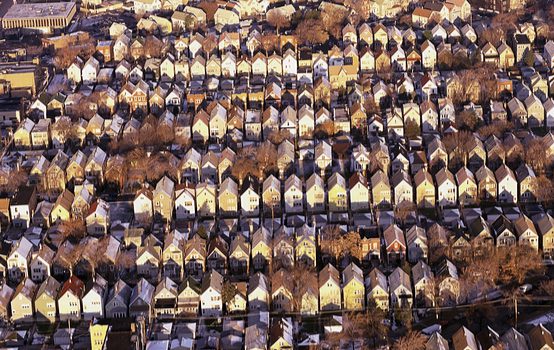Where Millennials Live

“Words on the Street” highlights the best writing on urbanism we’ve encountered this week. Post tips at @NewUrbs.
Where Millennials Live | Robert Steuteville, CNU Public Square
The often quoted cliche that millennials are moving downtown is not quite accurate. The greatest share of young adults is choosing urban neighborhoods outside of downtown. Just over a third of millennials identified in this 2014 nationwide survey live in such neighborhoods—preferably the walkable kind where they can get around without a car. Only 13 percent live downtown, which tends to be more expensive.
In total, 48 percent live in cities—with another 13 percent living in dense, older, inner-ring suburbs. These older suburbs also enable reduced automobile dependence, which cuts expenses for folks who are still paying for higher education. Older suburbs are relatively convenient to jobs and activities—a quality in demand with this cohort. So 61 percent of this group are living in compact neighborhoods or downtowns—a higher number than previous generations.
Helping Struggling Places | Adam Ozimek, Economy.com
The level of nihilism espoused by economists about what we can do to help struggling places in the U.S. is, quite frankly, strange. Whenever the issue of helping places is raised, critics jump straight to the most extreme examples, such as former mining towns. But the fact that some places need to shrink, and the costs of helping some places sometimes outweighs the benefits, is a far less powerful point than these critics imagine. Other places have survived the loss of major industries and gone on to thrive. Understanding why this happens sometimes and doesn’t happen other times, and what policymakers can do to help replicate the successes, are crucial policy issues that cannot be pushed aside by pointing out the impossibility or desirability of saving every place.
Elite Cities Are Pushing Out the Working Class | Nicole Gelinas, New York Post
In a study highlighted last week by the Wall Street Journal, Trulia analyzed who moves away from the country’s 10 most expensive cities, all on the East Coast or in California.
Answer: disproportionately, the poorest — those making $30,000 or less. But they weren’t exclusively poor: People earning $30,000 to $60,000 also left in numbers that exceed their share of the population.
People making more money left, too. But they left in smaller numbers, far less than their share of the population. (The cities continued to grow because of immigration, including high-earning immigrants.)
Jane Jacobs Predicted a Dark Age Ahead | Richard Florida, CityLab
Back in 2004, before the economic crisis, urbanists were celebrating the resurgence of the city. We didn’t think much about the rise of conservative populists like Trump or the late Rob Ford. But there was Jane Jacobs, arguing “caution” against a new dark age lurking right around the corner.
In Dark Age, Jacobs focused on the erosion of the key pillars of stable, democratic societies—the decline of the family, the rise of consumerism and hyper-materialism, the transformation of education into credentialism, the undermining of scientific norms, and the take-over of politics by powerful special interest groups, among others. Persistent racism, worsening crime and violence, the growing gap between the rich and poor, and increasing divides between the winners and losers of globalization provided growing evidence of the decay of society, she argued.
Why Planting More Trees Is One of the Best Things a City Can Do | Brad Plumer, Vox
Trees can make a city sidewalk prettier, sure. But that’s not even their best trick. A growing pile of research suggests that planting more urban trees, if done right, could save tens of thousands of lives around the world each year — by soaking up pollution and cooling down deadly heat waves. In fact, as a fascinating new report from the Nature Conservancy details, a well-targeted tree campaign could be of the smartest investments a hot, polluted city can make.
This post was supported by the Richard H. Driehaus Foundation.
Comments